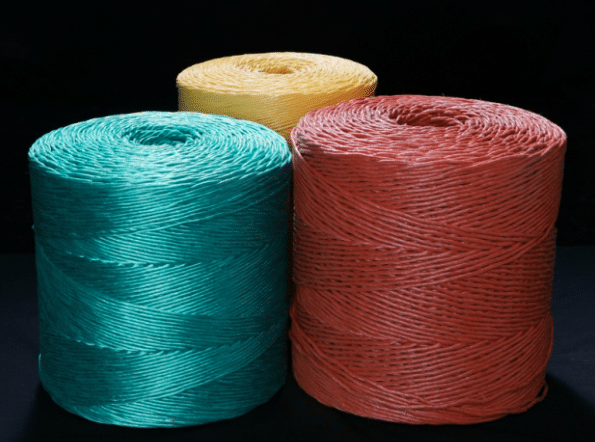Wire Ties or Poly Twine Bales?
I'm often asked if using bales that are tied with wire is a bad idea or a good idea. Perhaps it's worth sharing my perspective here on the site so that others with the same question can get at least one point of view. I hope you will share your thoughts on the matter below so that the "point of view pool" can get deeper.
The reality is that there are advantages and disadvantages on both sides of the question. I do have a preference though, and that is for poly twine over wire. The main reason for this is that the poly twine is much easier to work with. It cuts with a knife. It doesn't cause damage to my tools (or me personally) if I mistakenly hit it with a chainsaw, etc. It is soft and flexible, yet strong. It really makes everything easier.
Wire ties on bales have one distinct advantage over poly twine and that is that they make the bales incredibly tight. The baling machine is able to get the bales much more dense with the metal ties so the uniformity of the bales is improved as well. If you don't plan to modify the size of many bales in your project, then perhaps metal ties are the way to go.
If you are willing to work around the potential danger of using wire and the hassle of retying bales with it, then it could very well be a good match, especially if wire tied bales are what are most readily available in your area.
Jumping back to poly twine, it's important to note that not all twines are created equal. There are several different grades of poly twine meant for different uses. For example, there are very thick twines which are designed for use on jumbo bales, and there is very thin twine which is primarily used for flossing teeth (just kidding, but it is too thin to use for straw bale construction).
Making sure you have the right twine is important. As noted, the thin stuff is no good for baling a house; however, neither is the big stuff. It's too much like working with rope. My preference is for "super blue" (my name for it) twine. It is designed for use on three string bales and is both strong and easy to work with.
Wire Ties or Poly Twine Bales
Here's a tip about finding the right twine. The size of the bale of twine, the round spool that comes in pairs of two in a box of twine, is a set standard. This is because the baling machine into which the twine has to fit has a specified chamber for the bale of twine. As a result, you can tell the strength of the twine inside a box without ever having to open the box. Check out the length of the twine in the roll.
The longer the length, the thinner the twine has to be in order to fit into the standard twine-bale size. Don't use anything that is longer than 9000' unless it specifically states that it is reinforced for added strength. My favorite, the super blue, is 5000' long. As you can see, it is almost twice as strong as the standard 9000' rolls.
As a final note, do not use natural twine. Although the desire to have a natural house, made of all natural materials, is high, the simple fact of the matter is that the natural twines are not strong enough to effectively tighten a bale or attach mesh to a wall section.
The natural materials break under a little bit of force, and you will need to apply a lot of force to the twine when building a straw bale house. As much as I would love for the natural, biodegradable twine to be an option, it simply is not.
-Andrew Morrison




